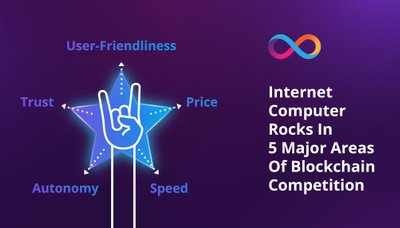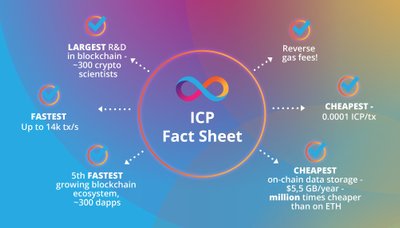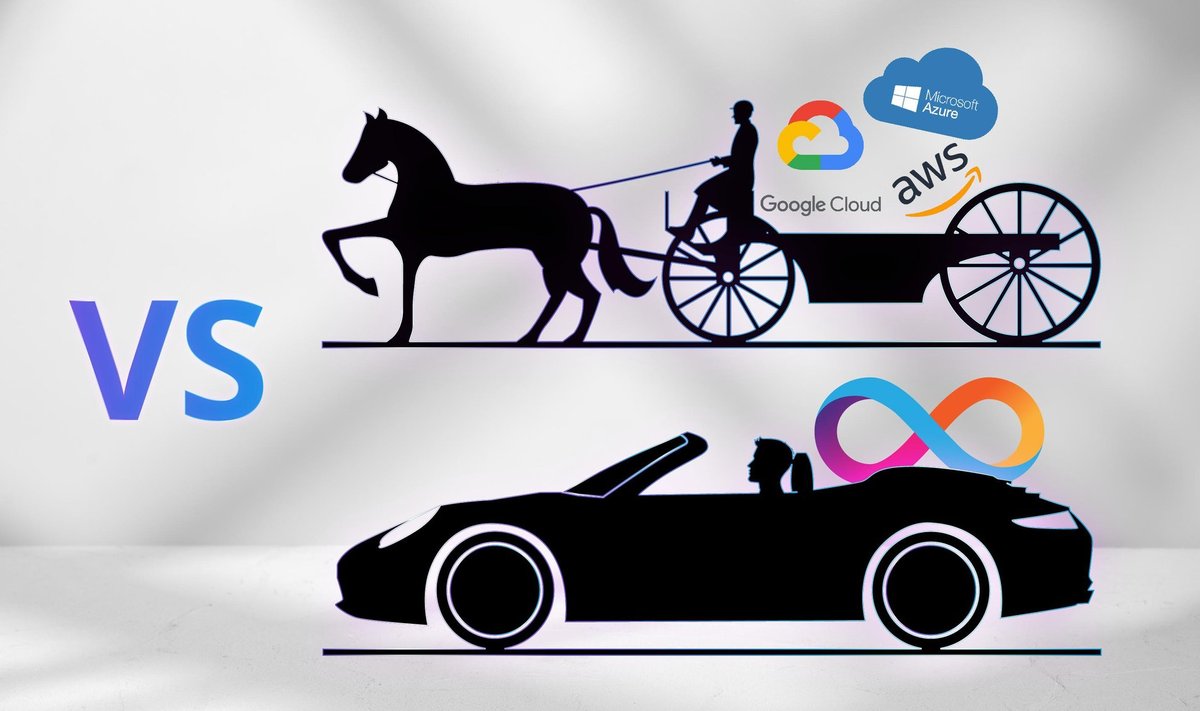But while analysts agree it is very likely the next generation of market disruptors - think Uber, Netflix, and Airbnb - will emerge from the blockchain ecosystem, many startups still choose to build their apps on the legacy web2 infrastructure. This is a clear example of technological inertia.
And inertia can be extremely dangerous. Just ask Kodak how conservative reluctance to embrace new superior tech, namely digital photography, impacted their business. Or talk to the horse carriage manufacturers…oh wait, they are no longer around, are they?
Of course money could still be made in the carriage industry during the changeover to internal combustion engine, but the future belonged to the automotive industry all along. Currently, we stand at a similar juncture in history. Even in full swing of The Fourth Industrial Revolution it is still possible to succeed in web2, but it is also clearer by the day the real potential lies with web3.
Are there really 10k different blockchains, and is it really so difficult to choose 1?
Short answer, no. Most tech entrepreneurs intuitively feel that employing blockchain technology could do wonders for them. But the doubts are still there: what specific advantages do DLT technologies bring in a specific industry? What are the risks involved? And, if we do embrace these technologies, which blockchain should we choose for building a specific application?
The myth there are thousands of different blockchain solutions only adds to this confusion. According to https://coinmarketcap.com/, there are 20,168 different cryptocurrencies as of today. The thing is 98% of these have nothing to do with layer 1 blockchains or protocols – absolute majority are ERC-20 or other layer 2 projects functioning on Ethereum and other largest layer 1 solutions. So only the latter are actual sovereign blockchains, and at the very best there are a dozen worth choosing from in terms of the reliability and technical characteristics.
The good news is most people in the tech world are already aware that web3 systems bring the perks of decentralization, immutability and transparency to the table. But many of them still believe these perks are more theoretical and hard to put into practice for their specific app. And that used to be absolutely true, until a few years ago.

The truth is, blockchain is of the most dynamic and fastest-growing industries in the history of mankind.
As a result, there is already a tech offering both flawless web2 user experience and the advantages of web3. For example, decentralized autonomous Internet Computer Protocol (ICP) offers the same web speed and experience that developers and users of the legacy systems all around the world are used to. The only difference being complete autonomy and decentralization.
ICP stands out from the rest of the crypto pack as a cheaper, faster and the only infinitely scalable general-purpose blockchain. At the same time, its ecosystem is developer-friendly and the protocol itself easy-to-integrate. Thus for Baltic and other tech companies willing to take the first step into the world of new possibilities unleashed by web3, Internet Computer is among the first choices to consider.
5 fundamental pillars of blockchain competition
The advantages of ICP are best introduced through five fundamental angles of blockchain competition: Trust, Speed, Price, User-Friendliness, Autonomy. These are introduced in the two parts of this article. Part 1 explains why ICP is the superior web3 solution through the angle of Trust, Resilience and User-Friendliness. In Part 2, we’ll show it’s the fastest and cheapest of all blockchains, an important Autonomy aspect will be covered there as well.
It’s important to bear in mind that what follows is a mere introduction to the technological advantages of the Internet Computer, an introduction that can barely scratch the surface of its benefits. Like fact that due to its efficiency, ICP is one of the greenest options compared to both blockchain and legacy solutions. One transaction on the Internet Computer consumes four times less energy than one Google search. The extensive info on the different facets of this protocol can be found on www.dfinity.org – which, by the way, also runs entirely on ICP blockchain.

Trust and Resilience
Paradox: while blockchain tech was created to solve the problem of trust, it itself became an object of deeply rooted mistrust. The atmosphere of suspicion surrounding blockchain is the result of many mal-intentioned actors, lack of regulation and bugged or unsustainable protocols in the crypto space. Just take the current meltdown of the CeFi sector in crypto as an example. Internet Computer in the meanwhile stands at the opposite side of the trustworthiness spectrum.
First of all, the protocol is supported by such VC heavy-hitters like a16z and Polychain. It has the largest R&D department in the blockchain space comprised of more than 300 world renowned cryptographers, programming language experts, and distributed systems engineers. Scientific publications by IC scientists have been quoted more than 100.000 times.
ICP nodes are hosted at independent institutional grade data centers around the world and don’t rely on cloud services at all – which is still a rarity in the blockchain world. In fact the protocol has been created to rival AWS and co as a fundament of the new internet. And so far has been pretty successful in doing that – as opposed to most centralized networks, ICP hasn’t had any significant downtime in its first year of existence.
Another unique aspect of IC resilience is a native Bitcoin and Ethereum integration. The beta version of BTC integration is currently being rolled out, whereas ETH integration is planned for the end of this year.
It is an actual game-changer in the decentralized finance, since ICP developers came up with a unique solution enabling them to bypass bridges while connecting to other blockchains. It’s an enormous leap forward security-wise since, according to the Ethereum founder Vitalik Buterin, ‘there are fundamental limits to the security of bridges’. As a result, ICP is already attracting lots of interest from various players fleeing the shaky grounds of DeFi
User-Friendliness
So while the decentralized nature of blockchain and ICP itself offers maximum resilience and transparency for the projects, developers can also enjoy full service and uptime after they deploy their decentralized app (dapp) on the ICP network.

Since DFINITY Foundation is the major contributor to the Internet Computer Protocol, its engineers not only grow the network further with new features and integrations. They also carry out all the maintenance, ensure all the dapps run smoothly on the network, and that ICP has virtually no downtime.
Besides 300 developers and engineers dedicated exclusively to maintaining and expanding ICP network, there are also around 300 dapps running on it. That makes for the fifth fastest-growing ecosystem in the whole blockchain space. As a result, a thriving ICP developer community has emerged sharing their knowledge and providing support on https://forum.dfinity.org/
IC’s purpose-built programing language is called Motoko. It is a relatively new and not widely-known language among developers. However, it is designed to be readable and familiar to JavaScript, and is very easy to learn for most developers. In fact, it is possible to learn to develop on ICP with just 5 online workshops.
To sum it up, trust, resilience and the ease of onboarding make put ICP among the top choices for start-ups looking to tap the advantages of web3. But its true potential is best understood when coupled with the speed and negligible price of using the Internet Computer. And these two key features will be covered in the second part of this article.
